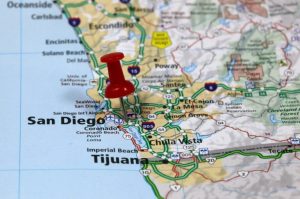
Overhead is then applied by multiplying the pre-determined overhead rate by the actual driver units. Any difference between applied overhead and the amount of overhead actually incurred is called over- or under-applied overhead. Predetermined overhead rates are important because they provide a way to allocate overhead costs to products or services. We can calculate predetermined overhead for material using units to be allocated. For example, we can use labor hours worked, and for calculating overhead for the store department, we can use the quantity of material to be used. The concept is much easier to understand with an example of predetermined overhead rate.
Why Do We Need to Calculate Predetermined Overhead Rate?

The overhead absorption rate is calculated to include the overhead in the cost of production of goods and services. It’s used to define the amount to be https://www.facebook.com/BooksTimeInc/ debited for indirect labor, material, and other indirect expenses for production to the work in progress. The predetermined overhead rate formula is calculated by dividing the total estimated overhead costs for the period by the estimated activity base. Management analyzes the costs and selects the activity as the estimated activity base because it drives the overhead costs of the unit. You can calculate this rate by dividing the estimated manufacturing overhead costs for the period by the estimated number of units within the allocation base. The price a business charges its customers is usually negotiated or decided based on the cost of manufacturing.
Assess the level of activity
The predetermined overhead rate also allows businesses to easily calculate their profitability during the period without waiting for the actual results of its operations. This means that businesses can use the predetermined overhead rate to constantly evaluate its operations without having to wait for actual results to come in. This allows the business to proactively control its performance rather than taking a reactive approach towards it.
Estimate budgeted overheads
A large company with a corporate office, a benefits department, and a human resources division will have a higher overhead rate than a company that’s far smaller and with fewer indirect costs. The overhead rate is a cost allocated to the production of a product or service. Overhead costs are expenses that are not directly tied to production such as the cost of the corporate office.

Direct costs typically are direct labor, direct machine costs, or direct material costs—all expressed in dollar amounts. Each one of these is also known as an “activity driver” or “allocation measure.” Cost accountants https://www.bookstime.com/ want to be able to estimate and allocate overhead costs like rent, utilities, and property taxes to the production processes that use these expenses indirectly. Since they can’t just arbitrarily calculate these costs, they must use a rate. Yes, it’s a good idea to have predetermined overhead rates for each area of your business. Now, let’s look at some hypothetical business models to see actual use-cases for predetermined overhead rates.

Computing Actual Overhead Costs
That is, if the predetermined overhead rate turns out to be inaccurate and the sales and production decisions are made based on this rate, then the decisions will be faulty. When there is a big difference between the actual and estimated overheads, unexpected expenses will definitely be incurred. Also, profits will be affected when sales and production decisions are based on an inaccurate overhead rate. Hence, it is essential to use rates that determine how much of the overhead costs are applied to each unit of production output. This is why a predetermined overhead rate is computed to allocate the overhead costs to the production output in order to determine a cost for a product. The predetermined overhead rate is, therefore, usually used for contract bidding, product predetermined overhead rate formula pricing, and allocation of resources within a company, based on each department’s utilization of resources.
Guide to Predetermined Overhead Rate Formula
- Businesses need to calculate the costs of a product before the actual results can be determined due to several reasons.
- That is, if the predetermined overhead rate turns out to be inaccurate and the sales and production decisions are made based on this rate, then the decisions will be faulty.
- For instance, if the activity base is machine hours, you calculate predetermined overhead rate by dividing the overhead costs by the estimated number of machine hours.
- In addition, it also depends on the requirement which enable the calculation of predetermined overhead rate to realistically reflect the characteristics of a given cost center and which avoids undue anomalies.
- The overhead rate or the overhead percentage is the amount your business spends on making a product or providing services to its customers.
- As explained previously, the overhead is allocated to the individual jobs at the predetermined overhead rate of $2.50 per direct labor dollar when the jobs are complete.
The production head wants to calculate a predetermined overhead rate, as that is the main cost allocated to the new product VXM. A Predetermined Overhead rate shall be used to calculate an estimate on the projects that are yet to commence for overhead costs. It would involve calculating a known cost (like Labor cost) and then applying an overhead rate (which was predetermined) to this to project an unknown cost (which is the overhead amount). The formula for calculating Predetermined Overhead Rate is represented as follows. The choice of selecting any absorption basis depends on the judgment and common sense; especially depends on the type of the manufacturing activities. In addition, it also depends on the requirement which enable the calculation of predetermined overhead rate to realistically reflect the characteristics of a given cost center and which avoids undue anomalies.

Monitoring relative expenses
He is a CFA charterholder as well as holding FINRA Series 7, 55 & 63 licenses. He currently researches and teaches economic sociology and the social studies of finance at the Hebrew University in Jerusalem. My Accounting Course is a world-class educational resource developed by experts to simplify accounting, finance, & investment analysis topics, so students and professionals can learn and propel their careers. Shaun Conrad is a Certified Public Accountant and CPA exam expert with a passion for teaching.


Leave A Comment